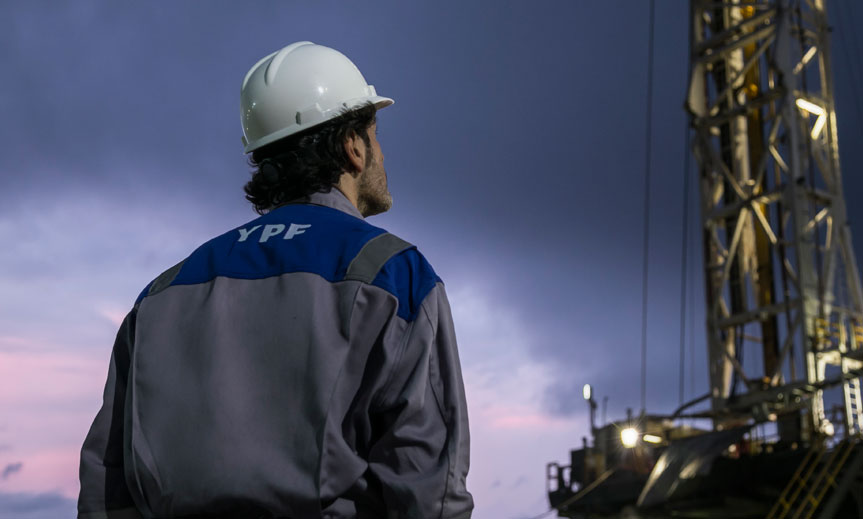Argentina’s state-owned oil and gas company YPF expects to take a final investment decision on the first phase of the planned Argentina LNG export project it is developing with Malaysia’s Petronas in 2025, according to YPF’s CEO, Horacio Marin.
YPF and a Petronas’ unit in Argentina signed a joint study and development agreement on September 1, 2022 to work on the potential development of the Argentina integrated LNG project, Argentina GNL, to liquefy natural gas from Vaca Muerta’s vast shale gas resources.
The project will include upstream gas production, dedicated pipeline and infrastructure development, LNG production, as well as marketing and shipping.
YPF initially said the first phase of the project includes a production of 5 million tonnes of LNG per year.
In the future, the capacity could rise to 25-30 million tonnes of LNG per year, the firm previously said.
Last year, YPF and Petronas also signed an initial land lease deal for the LNG export project with the port of Bahia Blanca in Buenos Aires to carry out technical, economic, maritime, soil, and environmental studies.
Floating LNG production units
“It is well known that Vuaca Muerta has world-class gas reserves, far exceeding local demand. To capture this opportunity, unlocking our shale gas potential, we plan to lead the unique Argentinian LNG project,” Marín said during YPF’s 2023 earnings presentation on March 7.
“As previously announced, the full project targets total processing capacity between 25 and 30 mtpa and should represent the key way to place Vaca Muerta shale gas in the global market, turning YPF and Argentina into a world-class LNG exporter,” he said.
He said that the first stage of the project “aims to bring to Argentina an existing floating LNG facility with an initial capacity between one and two mtpa by 2027.”
Marin did not provide further info on the FLNG.
Petronas may move one of the company’s existing two units from Malaysia to Argentina.
Currently, Petronas operates two floating LNG facilities, namely the 1.2 mtpa PFLNG Satu as well as the 1.5 mtpa PFLNG Dua, both located offshore Sabah. It has also a third FLNG with a capacity of 2 mtpa on order in South Korea.
Marin said the second stage of the LNG project consists of the construction of two new floating LNG faculties, representing a capacity of around 8-9 mtpa by 2030.
He said that FID on the first phase is expected by mid-2025 and “requires investments of around $200 million on a gross basis.”
Revenues of $15 billion
YPF’s presentation shows that the third stage of the project from 2030-2032+ consists of onshore modules with a capacity of 15-20 mtpa.
“Let me point out of the importance of the project once it is completed, we estimate an addition of total export revenues of $15 billion annually to Argentina’s balance of payments,” Marin said.
He said that the company expects to own 25-30 percent of the total LNG capacity.
“Bearing in mind that this will be the unique Argentinian LNG project we are working nowadays in order to lead this project with our strategic partner and engaging the rest of the industry,” he said.
FEED stage, additional partners
Answering a question during the earnings presentation regarding the next steps for the LNG project, YPF’s VP for strategy, business development, and control, Maximiliano Westen, said that YPF is “moving into the FEED stage” with the LNG project.
“We need to develop engineering, there are several packages of engineering. This year and the big part of the next year we are going to work on engineering,” he said.
“We are targeting FID for the first stage of the project in mid-2025 or the second half of 2025,” Westen said.
“In parallel, there are many things that need to move forward. Of course, we are open for additional partners, and also we are going to work on project financing,” he said.
“Also, there is also a lot of permitting and environmental work that needs to be performed,” he added.

